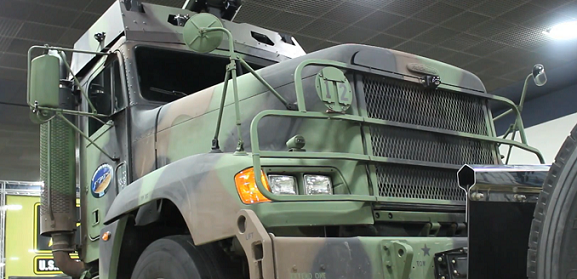
Heavy-duty trucks that don't need a driver behind the wheel could be on the road in as little as three years.
That's the assessment of industry experts speaking at the Automated Vehicles Symposium in San Francisco on Wednesday, where they laid out a tentative road map for how self-driving trucks will begin to integrate with the existing fleet.
"A lot of the technology is driver assist or safety enhancement, said Max Fuller, executive chairman of U.S. Xpress, Inc., the fourth largest trucking company in the U.S. "If you look at [autonomous vehicles], it will come in pieces."
For companies like U.S. Xpress, the case for autonomous trucking is a no brainer: "We're trying to enhance the safety, give [drivers] the ability to be more productive, try to create a better return for the company and supply a better service for our customers," Fuller said.
He anticipates Level 4 autonomous capability in three to four years. The National Highway Traffic Safety Administration defines a Level 4 autonomous vehicle as one that can drive itself in most situations, with some exceptions, such as weather or construction, where a human may need to take control.
But that isn't a universal view in the trucking industry.
Daimler Trucks North America is testing self-driving trucks but is taking a measured approach to the technology, Derek Rotz, director of advanced engineering for Daimler, told Trucks.com in a June interview.
There are regulatory issues and driving situations that are anomalies still need to be conquered.
Detecting road debris for example, correctly reading poor lane markings are still challenges for the technology, Rotz said.
"What happens if a steer tire blows out? Humans are very good at intuitively assessing a situation and responding. Computers need to have all that lined up for them, all those edge cases," he said
Another issue is what happens to truck drivers as the vehicles become automated.
Despite estimates that millions of truck driver jobs could be lost to automation in the next ten years, many in the industry say that isn't likely. One size does not fit all with the multifaceted trucking industry, which will incorporate different levels of automation depending on the task.
"We see our technology as complementary to drivers," said Alden Woodrow, product lead for self-driving trucks with the Uber Advanced Technologies Group. "We have a much more optimistic view about the implications for driver livelihoods, employment and productivity due to some of the ways we see the industry shifting with the technology."
Uber will articulate more of its vision for self-driving trucks in September, said Woodrow, who described the company's overall goal as taking promising technology and making it safe, reliable and commercial.
Safety is also a major factor for truck manufacturers such as Volvo Group, which has demonstrated heavy-duty vehicles with various levels of autonomy over the past few years, including a self-steering tractor, a driverless garbage truck and the world's first fully autonomous mining truck.
"The value proposition is that the typical route is repetitive. It's point to point," said Dr. Aravind Kailas, principal technology planner for Volvo Group North America. "You operate an unmanned vehicle in a constrained environment that is hazardous to human life, I think that's a win-win for everybody. That's the business case here."
On Tuesday, Volvo unveiled its 2018 VNL long-haul truck, its first full redesign of the vehicle since 1996. The company is making autonomous safety features such as automatic emergency braking a standard feature of the new model.
Whether it's a fully autonomous, driverless truck like the mining vehicle or one that still requires a driver but incorporates an individual safety feature such as automated braking, "there's a value proposition for every level of automation," Kailas said.
Safety and productivity are key to self-driving truck adoption, said Michael Cammisa, vice president of safety policy and connectivity for the American Trucking Associations. "If trucking companies don't believe it will be safe, they won't buy it."
The trucking industry is anxiously awaiting guidance from federal and state regulators about what companies need to do to encourage responsible adoption of rapidly evolving autonomous vehicle technology. Flexibility for innovation will be key, he said.
"As we're developing policy, we need to make sure it allows for these different technologies to blossom and find their niche and for the trucking companies to - phase them in in a manner that works for them," Cammisa said.
"Right now, we're in flux," he said. "We don't know what new requirement might come out and change the way we can deploy this technology. We're in this development period."
Like any disruptive technology, there are growing pains in getting from the promise of what it can deliver to the point of actually delivering it. That's the gray area in which the industry currently operates as it rolls toward an autonomous future.
"We'll continue to adopt a lot of these new technologies," said Fuller, of U.S. Xpress. "Our No. 1 goal is to create jobs that people want and that's the reason we need products that make the job a lot simpler for drivers."
When buying into new technologies, the motor carrier looks carefully at its return on investment, he said.
"We're looking for payback in 18 to 24 months," he said. "Trucks are traded before they get to 500,000 miles, which is three to four years."
If the technology keeps developing and there are no regulatory hurdles, when the trucks that are bought today will be retired from service they will be replaced with vehicles where computers do much more of the driving.
By Susan Carpenter
Source: Trucks.com